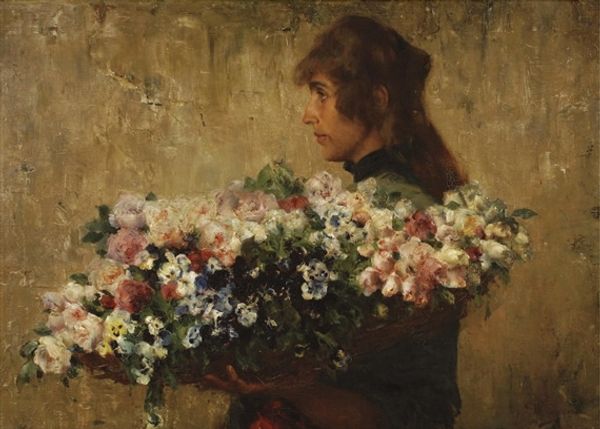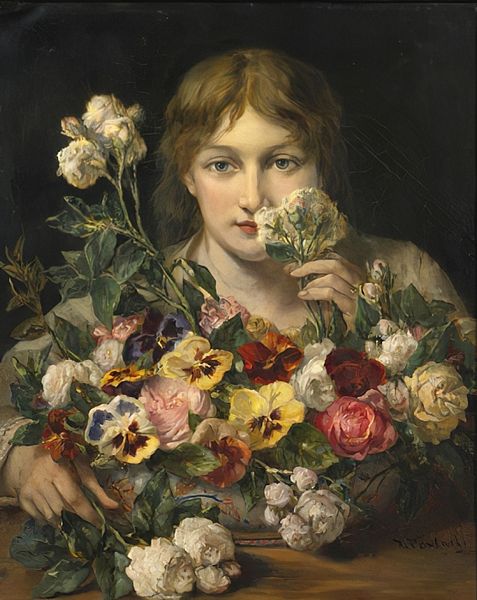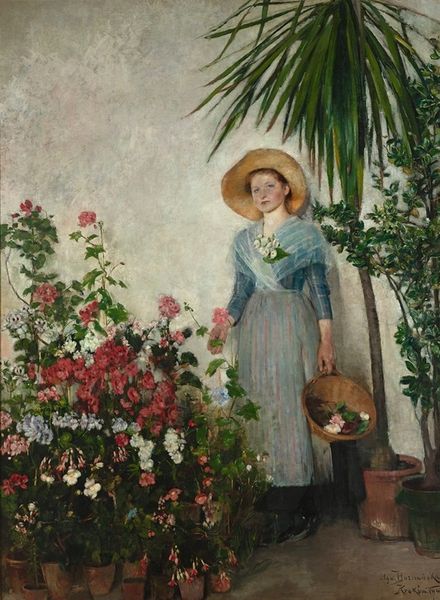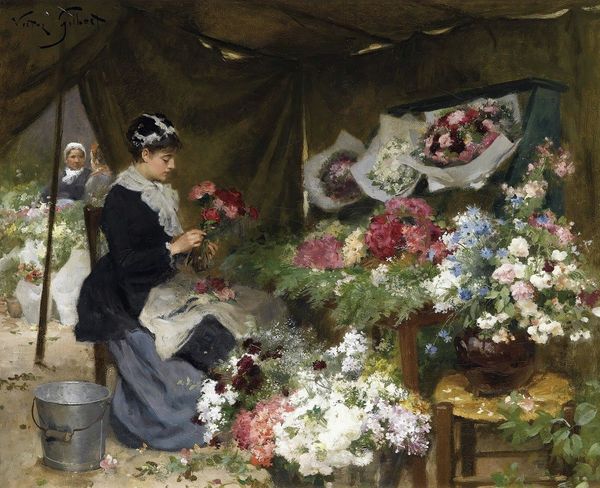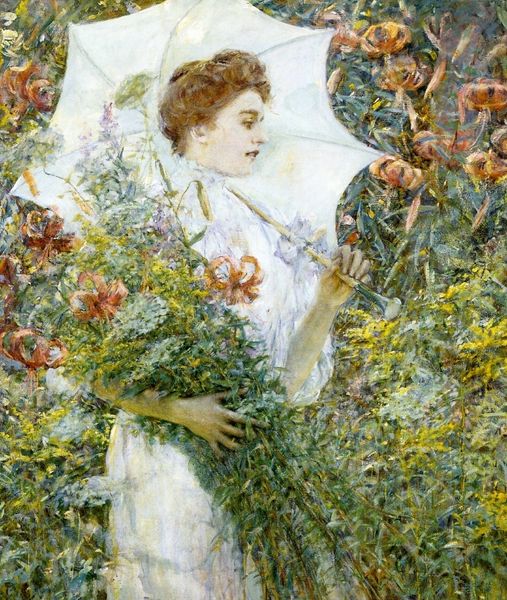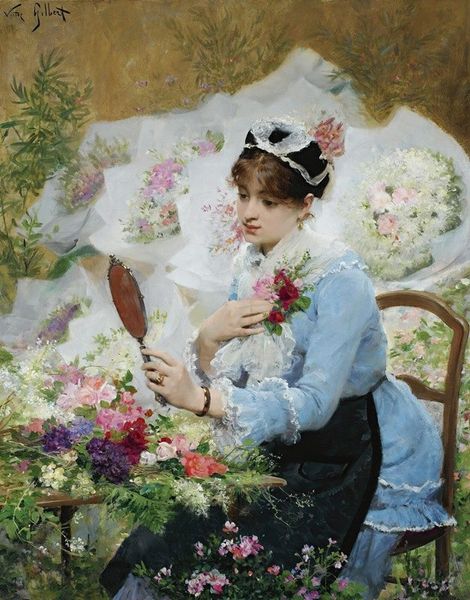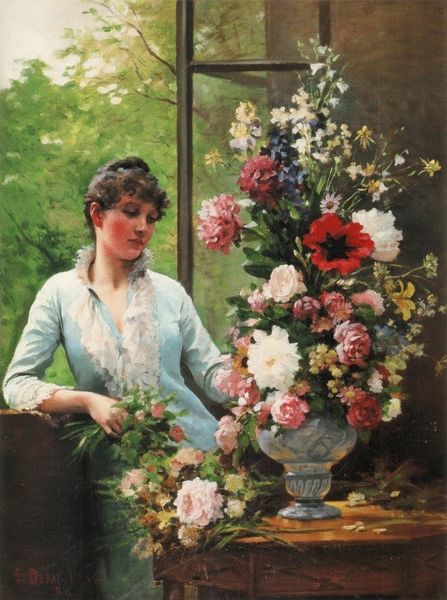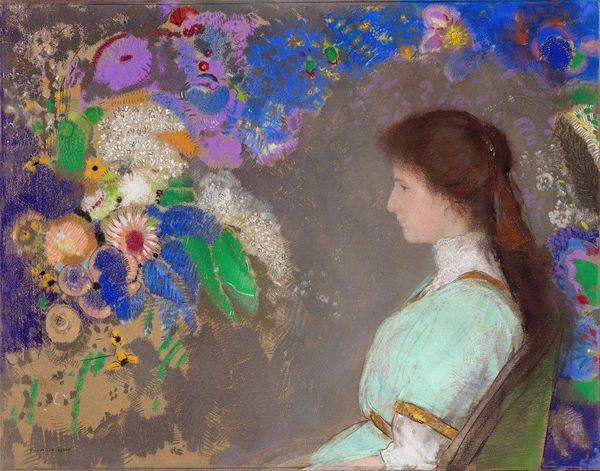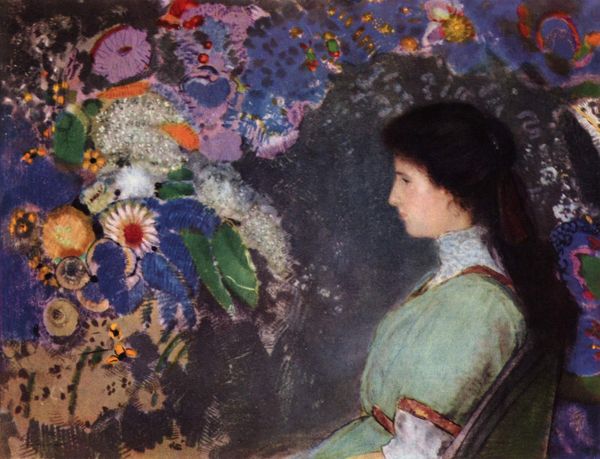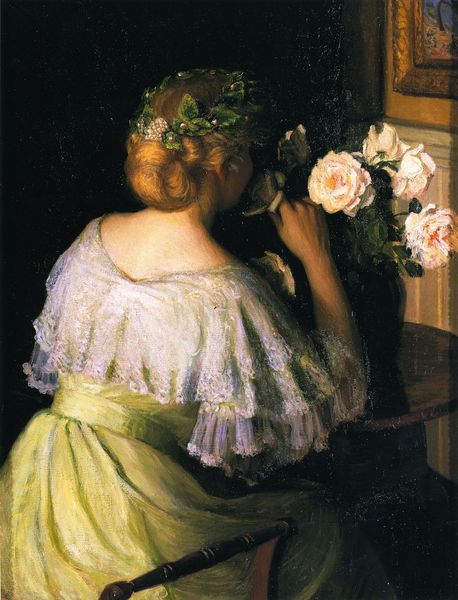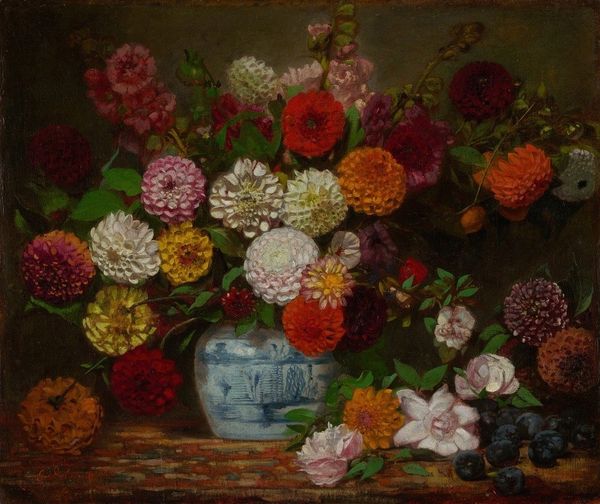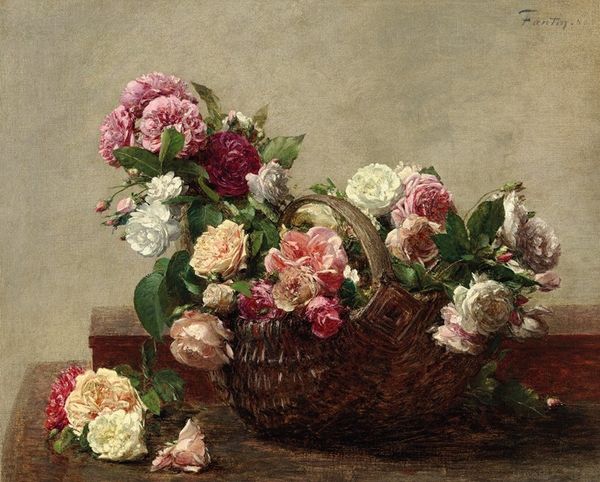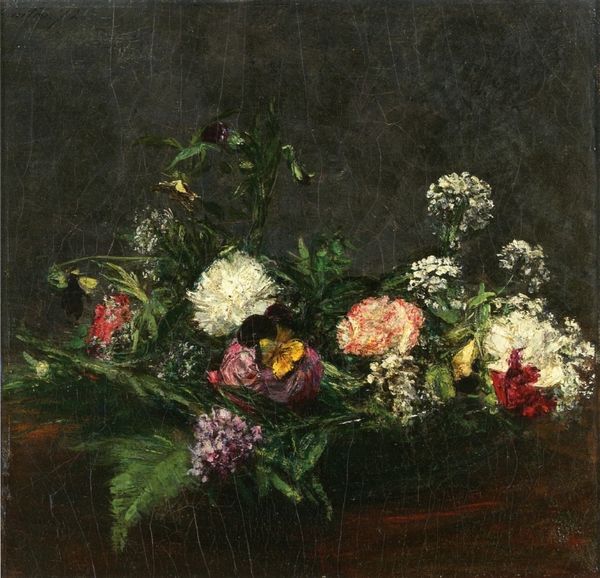
painting, plein-air, oil-paint
#
portrait
#
painting
#
impressionism
#
plein-air
#
oil-paint
#
landscape
#
oil painting
#
romanticism
#
portrait art
Copyright: Public Domain: Artvee
Editor: Gustave Courbet’s “Trellis”, painted with oils, depicts a woman tending a vibrant wall of flowers. There’s almost a Pre-Raphaelite romance to the subject. How do you interpret this work, especially given Courbet's realist stance? Curator: The contrast you noted is key. While Courbet championed Realism, often depicting everyday life and laborers, "Trellis" presents a different perspective on the female figure. We see a woman and flowers, symbols often associated with femininity, but the active gesture of tending suggests agency. How does this active tending of the flowers influence your reading? Editor: It does feel less like a passive display and more like active engagement. Almost like the woman has agency, not just being beautiful but nurturing beauty. Curator: Precisely! Considering Courbet’s socio-political context, this subverts typical gender roles, where women were often ornamental. By presenting her as actively shaping her environment, “Trellis” challenges these passive representations. Note also how his plein-air approach to painting ties the scene to labor as he presents the working environment, literally on location. How might this add to your interpretation of the politics of painting in mid 19th-century France? Editor: Wow, that’s a total reframe. I see it less as simply a pretty picture, but more as a quiet statement about women's work, or place in society. Curator: Exactly. "Trellis" uses the traditional visual language of beauty to insert a radical idea about women and their relationship to the world. The canvas becomes a space to consider agency, and visibility, not merely representation. Editor: Thanks! Now, I can look at it as both pretty and political. Curator: Agreed! And understanding that complexity, that’s where the true beauty lies.
Comments
No comments
Be the first to comment and join the conversation on the ultimate creative platform.
